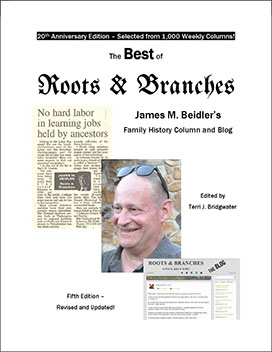Published June 8, 2025
| No Comments | Leave A ReplySuggested headline:
Engravings bring 1600s German towns to life
You never know what type of knowledge you may pick up when you take a weeklong German genealogy course at an institute.
I’ve reported previously in “Roots & Branches” and German Life on different books, websites, and resources I gained from taking the Intermediate German Genealogy course from Warren Bittner and Daniel Jones a couple of years ago.
But one massive set of books remained on my “to buy” list since 2023: a reprint of Topographia Germaniae, the mid-1600s compilation of illustrations and descriptions of German towns.
Created by engraver Matthäus Merian and writer Martin Zeiler, and published in Frankfurt in 38 parts, it has the potential to give researchers the look and feel of what the towns from which their ancestors came looked like after the Thirty Years War (which ended in 1648) and before the first wave of German emigration to both North America and to Eastern Europe began in earnest in the late 1600s.
While not nearly every German town is profiled in these volumes, it’s likely that the equivalent of “county seats” for the tiny villages will be found, either with a bit of text about the town’s location and history, and sometimes with an engraving of what it looked like—centuries before the so-called “bird’s eye view” maps of cities became popular in the late 19th century.
For just one example from my own ancestry, I looked up Sinsheim, the larger town near Steinsfurt, the place where Heinrich Gruber was baptized in 1700 before the family left in 1732 for Pennsylvania (side note: descendants of this family ran the locally famous Gruber Wagon Works, now preserved at the Berks County Heritage Center as an example of early 1900s rural manufacturing).
Steinsfurt itself is too small to merit its own entry (today it’s been merged into Sinsheim), but for Sinsheim it has almost a page of text along with an engraving detailed enough to show houses, trees and of course major buildings such as churches and a nearby cloister.
The text on Sinsheim recounts its history back to the 1300s (including the fact that it was previously spelled Sünsheim), and detailing that it was previously the capital for the Count of the Kraichgau before being ceded to a different German state, the Electoral Palatinate (which translates as the Chur-Pfalz in the German language).
The eight-volume reprint of this set of books was not inexpensive but just from the time I’ve been able to spend with it so far, I can tell it’s worth having on my bookshelf of German genealogy series!
***
And, of course, I had to go back to the source material for the information on the Grubers!—the late Annette K. Burgert’s work on the Northern Kraichgau—and found that there were more generations of ancestors in the area’s church books. But that’s a story for another column!

